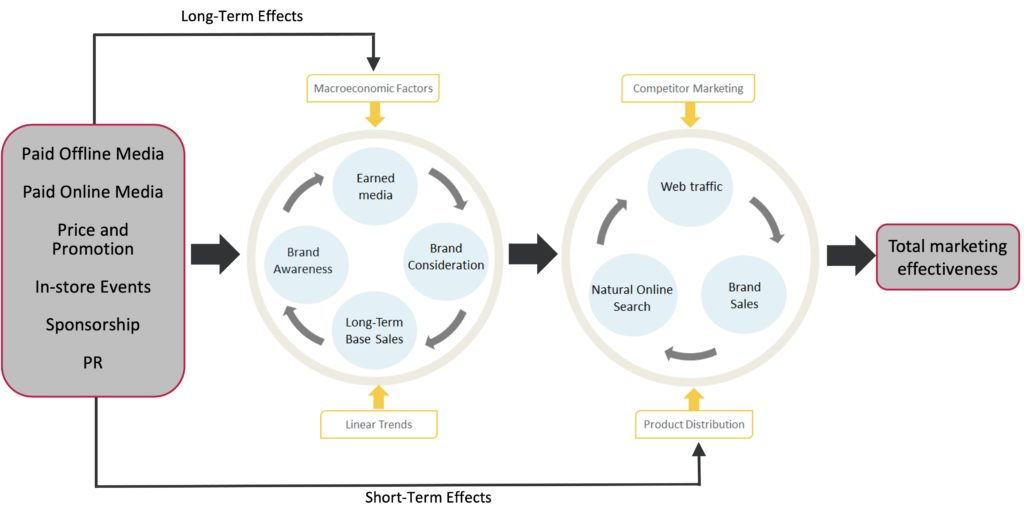Challenge
- A large US retail home goods client with a multi-channel media strategy wanted to understand the optimal levels of off and online marketing investment across a $90+ million budget to maximize short-term sales and long-term brand growth. The client selected Marketscience as a trusted advisor to evaluate and help improve its short and long-term growth strategies.
- To optimize its short-term sales growth strategy, the client asked us to evaluate in-store price sensitivity and expected sales levels on and off promotion, coordinate its off and online media strategy and validate the performance of its affiliate program across product categories.
- To optimize its long-term growth strategy, the client required a deeper understanding of relative brand strength by product category and the causes and drivers of brand growth.
Solution
- To answer these questions, we provided the client with a comprehensive dynamic short and long-term modelling solution using daily sales data split by product category, daily marketing investments covering traditional paid offline, online search, display and social media, unique web traffic click-through together with weekly consumer perception metrics and media awareness.
- These data were combined into a comprehensive consumer journey model, illustrated in Figure 1, tracing the impact of marketing stimuli on natural search, the components of website traffic click-through, consumer brand perceptions and off and online sales.
Figure 1: short and long-term sales networks


- This structure allowed us to unpick the short-term impact of off and online marketing, controlling for evidence of parameter bias in online media such as branded search and targeted display programs. Model baselines by product category were then aggregated to weekly frequency to investigate the drivers of customer loyalty and long-term brand growth.
Results
Short-term
- Online versus in-store ROI per channel, plus estimated times to sales conversion.
- The relative sales impact of social media channels, where Facebook tended to outperform other channels such as Pinterest Twitter and Snapchat.
- The category sales impact of the affiliates partnership channel and the cannibalisation impact on other web traffic sources.
- Interactions between off and online media and the halo effects of online media on offline sales helping to optimise off and online media strategy.
- Recommendations on the optimal allocation of media spend across all channels together with the optimal level of total marketing investment.
- Sales impact of price promotions, with impact varying by promotional depth and extent of halo (complementarity) effects between categories.
These results allowed the client to pinpoint the optimal level of marketing investment across off and online channels as well as optimal relative allocations between them. The result was a more coordinated off and online marketing strategy generating a 6% increase in incremental revenue.
Long-term
- In-store results indicated differential base price elasticity by product category. Highly inelastic elasticities for key categories provided initial indicators of relative brand strength. This evidence was corroborated in the long-term network, where we found evidence of loyalty growth and brand-building only in the most price-inelastic product category. Here, we demonstrated strong persistent impacts of brand consideration and unaided awareness on base sales, controlling for the expansionary impact of the wider macroeconomic environment.
- We then showed how word of mouth (earned media) together with a range of off and online media drives advertising awareness which in turn impacts unaided brand awareness. Weighting this by the persistent impact on base sales gives the final long-term base impacts. Key performers were word of mouth, TV, radio and You Tube display.
- These results allowed the client to adjust their short-term media strategy in two key ways.
- An upweight of TV, radio and YouTube display investments, with a focus on messaging for the more price inelastic product categories. This helps to capitalise on brand strength and generate halo effects onto the more price elastic and weaker product segments.
- A focus on the earned media strategy to benefit from word of mouth effects.
What We Did
- BaseDynamics Modeling
- Simulation & Optimization
